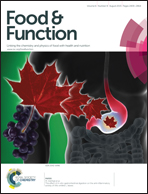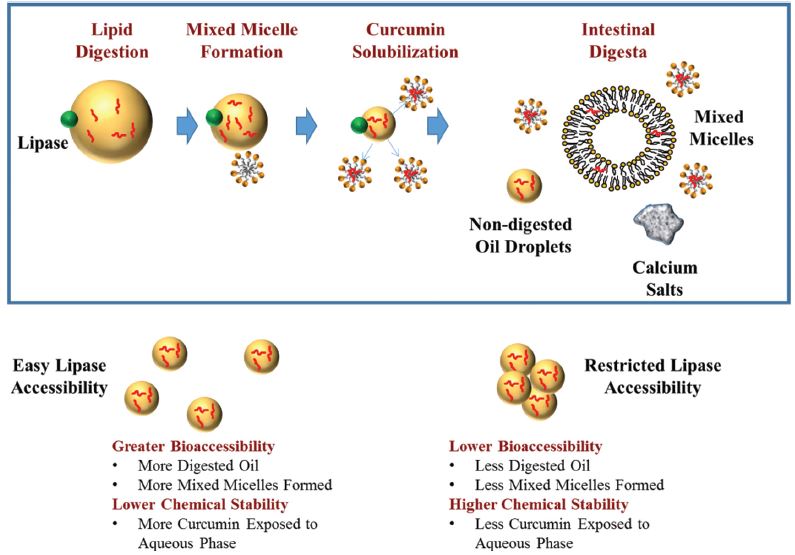
Want to know more? Read the full article below – its free to access for the next 6 weeks!
Keep up-to-date with the latest content in Food & Function by registering for our free table of contents alerts.

Want to know more? Read the full article below – its free to access for the next 6 weeks!
Keep up-to-date with the latest content in Food & Function by registering for our free table of contents alerts.

Ever wondered exactly why sugar takes the bitter edge off your morning coffee? A recent theoretical study into caffeinated drinks has dispelled a long-held hypothesis; besides directly masking the flavour of caffeine, additives were found to influence our taste perception via a direct caffeine–additive interaction, rather than affecting the water structure around the caffeine molecules.
Read the full article in Chemistry World >>>
Caffeine dimerization: effects of sugar, salts, and water structure
Seishi Shimizu
Food Funct., 2015, Advance Article
DOI: 10.1039/C5FO00610D, Paper
Do you fancy submitting an article to Food & Function? Why not submit to us here today or alternatively email us with your suggestions!
 Let it be Indian, Afghani, Cambodian, Vietnamese, Nepalese or Thai cuisine, Turmeric (Curcuma longa) is an integral part of all of them and many more! Turmeric is widely used in food preparations as a spice, pigment, and nutraceutical because of its characteristic flavour profile, yellow colour, and biological activity. Turmeric is not only an essential ingredient in food but also a very important component of many formulations in medicine owing to the potential health benefits it offers. Have you ever wondered what gives turmeric the power to do so?
Let it be Indian, Afghani, Cambodian, Vietnamese, Nepalese or Thai cuisine, Turmeric (Curcuma longa) is an integral part of all of them and many more! Turmeric is widely used in food preparations as a spice, pigment, and nutraceutical because of its characteristic flavour profile, yellow colour, and biological activity. Turmeric is not only an essential ingredient in food but also a very important component of many formulations in medicine owing to the potential health benefits it offers. Have you ever wondered what gives turmeric the power to do so?
Curcumin is one of the most biologically active components within turmeric. The potential health benefits and good safety profile of curcumin makes it an essential ingredient in functional food products as a nutraceutical ingredient. However, the high melting point and poor water solubility of curcumin make it difficult to incorporate into many functional foods and beverages, and its poor stability in vivo and low bioaccessibility within the gastrointestinal tract reduce its biological activity. The strategy that is widely used to address these shortcomings is to encapsulate it within food-grade delivery systems such as nanoparticles, hydrogel beads, emulsions and suspensions which help in shielding curcumin on its way towards the target resulting in improving its functional performance.
Can there be an alternate strategy?
In their search for the answer to this question, Wei Liu et al. form Nanchang University and David McClements et al. from UMass, Amherst have devised a strategy to develop excipient foods that are consumed with curcumin-rich foods. Oil-in-water emulsions turned out to be better candidates for developing excipient foods. The study involved the influence of emulsifier type on the ability of excipient emulsions to solubilize curcumin, and to increase its bioaccessibility. In their recent article in Food & Function, they have discussed the rational design of excipient emulsions by varying the emulsifier type as well as the preparation conditions of emulsions, and the effect of these emulsions on the fate of curcumin in simulated gastrointestinal digestion.
A schematic presentation of fate of curcumin under different emulsifying conditions is shown in the figure below.

The results of this study substantiate the utility of excipient foods in improving functional performance of curcumin which can be extended to other lipophilic nutraceuticals and vitamins. To read the complete story and to know how the yellow colour helped them to determine the bioaccessibility of curcumin, read the full paper for free* using the link below:

The 7th International Conference on Polyphenols and Health (ICPH7) will be hosted by the Vinci congress centre in Tours, France between 27th-30th October 2015
‘ICPH is the most important international forum to present and discuss the latest trends, topics and developments in the field of polyphenols, food science and health.’
Main topics of discussion:
Dates for your diary:
The conference will feature talks from many leading researchers in the field including, John van Duynhoven (Wageningen University, The Netherlands), Rosa Maria Lamuela-Raventos (University of Barcelona, Spain) and Hang Xiao (University of Massachusetts, USA)
Click here for the full programme >>>
To find out more about the conference and to register your interest, please visit their website www.icph2015.com